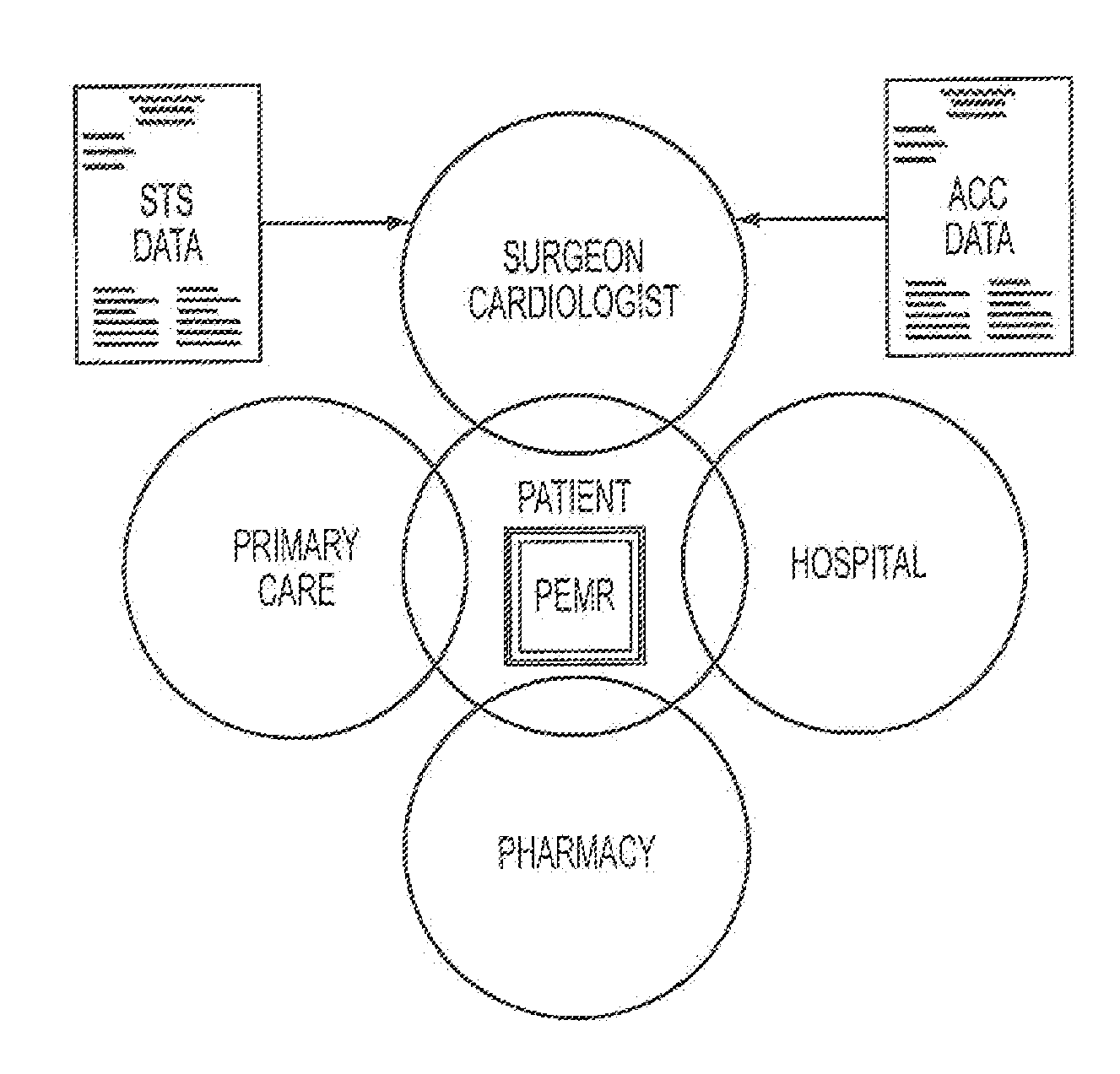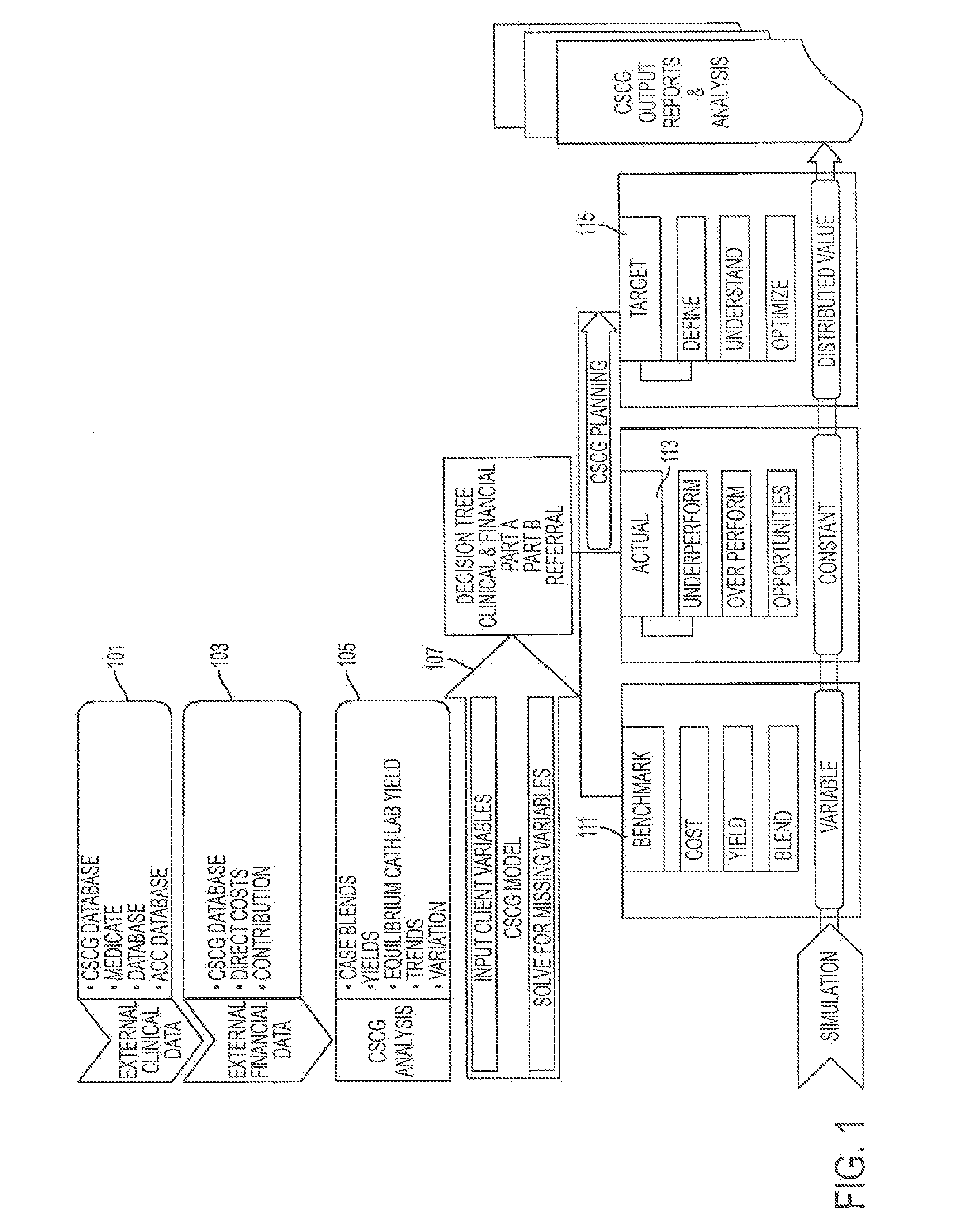Healthcare costs are skyrocketing.
The resulting increase in co-pays and deductibles threatens access to care for many.
Even with such large expenditures on healthcare, however, there are serious questions regarding the correlation of the amount of money spent on healthcare to the quality or necessity of the healthcare services received.
One key problem at the heart of rising healthcare costs is the inefficiency of the healthcare system.
While the delivery of quality
medical care demands that providers have access to necessary and trusted information at the right time and in the right format, the healthcare industry, unlike most other industries, has not implemented analytics and
business intelligence technology advancements.
Rather, to a large extent, the healthcare industry still relies on antiquated paper-based records and information systems which needlessly increase the cost of healthcare to the tune of billions of dollars every year as a result of their inefficiencies.
The communication and
exchange of information in the healthcare industry is only further complicated by some of the inherent characteristics of the delivery of healthcare.
Due to the multiple providers, services and payers involved, the healthcare industry is inherently fragmented.
This fragmentation is only further complicated by inefficient or absent communication and increased provider specialization.
These communication problems arise partly because of the antiquated way data is stored in different and incompatible formats: on paper, within inaccessible “silos” behind the firewalls of institutions, as
tacit knowledge in someone's mind.
This results in incomplete, inaccurate (i.e., wrong / out of date) or unclear communications.
One of the most serious problems with the antiquated
record keeping utilized in the healthcare industry, or even in the areas where some form of
information system is utilized in combination with the standard manual systems, is the impediment of the provision of important
clinical information.
The
current practice in the healthcare industry puts an undue burden on clinicians, nurses and allied healthcare professionals to make complex and
time sensitive decisions in high-pressure situations with lives on the line.
The unaided human mind simply cannot process the current volume of clinical data required to provide care.
The current problem with clinical analyses is not the result of a shortage of data; healthcare organizations are generating more data than ever, in excess of 1,000 events per second for some high-volume streams.
The problem, rather, is that most of this information is not harvested or is used to late for anyone to benefit from it, due to the limitations of the manual systems and limited
automation and IT applications in place in hospitals.
In addition, this data is often stored in different formats making it challenging to efficiently analyze and
gain insight without using powerful analytics solutions.
The consequences of the data overload combined with lack of access to trusted information can lead to clinical decisions based on invalid or out-of-date information, leading to potentially disastrous consequences.
For example, a large majority of adverse
drug events (ADEs), a leading cause of morbidity in the U.S., can be attributed to information fragmentation and the lack of communication between providers.
Those at greatest risk to fall into these “gaps” are patients with co-morbidities, where the issues of complexity and limited time available for careful assessment potentially lead to sub-optimal clinical practices and outcomes.
Further, the volume, frequency and complexity of clinical information require real time analytic and intelligence monitoring technology to make sense of these events.
In addition to causing problems with the provision of important clinical information, the antiquated, fragmented, siloed and only intermittently automated systems for storing and providing hospital line information are also inefficient for determining if money is being spent wisely on a healthcare procedure or expenditure; i.e., for performing cost / value equations.
To at least some degree, the problem of healthcare spending arises from the difficulty in quantifying the “value” of healthcare.
Econometrics provides a large number of methodologies to try and value intangibles, but the determination of the value of living without pain, living with improved mobility, or even living for an additional month can be problematic as these values can change from person to person, and within one person's lifetime.
This is compounded by the issue of personal bias.
At the same time, even this determination in the aggregate has proven elusive.
Thus, while one can say that a
medical procedure involved X materials, Y time of a doctor, and a Z length
hospital stay, it is difficult to say that same value will apply to the same medial procedure given to a different patient at a different location.
Variable factors such as the cost of materials, patient complications, and regional healthcare market variations, amongst others, can render even the same medical procedures incomparable.
Thus, it can be very difficult for a hospital to determine if they are providing efficient healthcare services and which procedures represent more cost
effective treatment.
For example, one course of treatment may be more cost effective for patient A, while a second may be more cost efficient for patient B. Further, hospitals and health centers do not all cater to the same patients.
Unfortunately, spreadsheets are not adequate tools to do this important work; they were not designed to facilitate interactivity, aggregation or multi-
dimensional analysis of data for decision-making.
In addition, the complexity of the analysis required to support healthcare has increased to the point where longitudinal, multi-variable analysis and data-management requirements have exceeded the capabilities of spreadsheets.
Spreadsheets simply were not designed for creating larger, multi-dimensional business and financial models.
Even before hitting the physical size restrictions, the performance of most models will deteriorate due to the sheer number of formulas and calculated cells.
Large models often have very long calculation
processing times and quickly become unstable.
These inherent problems in spreadsheet technology result in many problems.
Often, these spreadsheets contain hidden errors and inaccuracies that can lead to bad decisions.
The variation in drafting causes inconsistencies in analysis, an inability to audit workflows and significant
data reliability challenges.
Further, as previously alluded to, the healthcare business is complex, requiring the analysis of multi-dimensional issues and unknowns from both a clinical and a business perspective.
However, with the current information systems utilized in the healthcare industry, there is no efficient or reliable way of determining the projected revenue and cost compared to quality and necessity for providing a service at the time the service is provided.
However, as noted herein, the antiquated systems utilized by the healthcare industry for performing these analyses are insufficient, inadequate and problematic.
 Login to View More
Login to View More  Login to View More
Login to View More 


